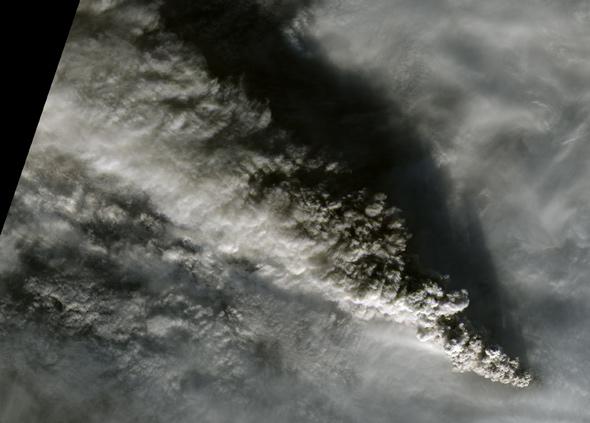In May 2013, the Aleutian island volcano Pavlof erupted mightily, blowing a stream of ash into the atmosphere and messing up airplane travel.
Last week, it was at it again. This eruption was even more violent than last year’s; the plume went 9 kilometers into the air, and was hundreds of kilometers long. It was seen by the Landsat 8 satellite on Nov. 15:

Photo by NASA Earth Observatory image by Jesse Allen, using Landsat data from the U.S. Geological Survey.
There’s a weird beauty to such things, as awful as they can be. I see them, I suppose, like a rabbit sees a snake: morbid fascination (mixed with a small to fair dose of terror). Even though, in terms of human settlements, Pavlof is remote, it still can muck up airplane travel. Ash is made of fine but very jagged particles of pulverized rock and glass, and if it gets into an airplane engine, it can jam it up but good.
That’s why, as I pointed out in last year’s article, we need the Alaska Volcano Observatory … which is generally under threat of a budget ax. That’s nuts, but then, that’s politics these days. When you have a group that denies the existence of everything around them, then dipping your toe into the presidential election campaign by mocking volcano observatories probably seems downright sane in comparison.
It isn’t.